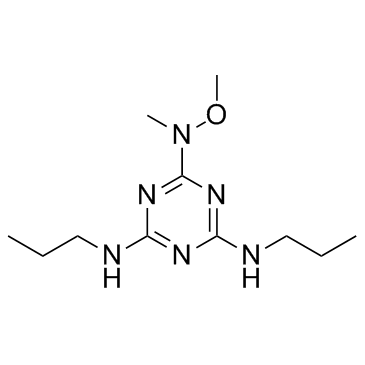| Description |
GAL-021 a new intravenous BKCa-channel blocker.
|
| Related Catalog |
|
| In Vitro |
GAL-021 is being developed as a novel breathing control modulator to preserve respiratory drive and protect patients from respiratory impairment due to opioids and other modalities. Using inside-out patches in GH3 cells, GAL-021 exerts concentration-dependent inhibition of single-channel KCa1.1 activity. When evaluated against 12 different cardiac ion channels, inhibition is 35% or less at 30 μM. No significant kinase inhibition is observed at 10 μM. At 30 μM in the radioligand binding assays, interactions (defined as >50% radioligand displacement) are detected at adenosine A1 (65% I), A2A (79% I, IC50 approximately 5μM), and A3 (93% I; IC50 approximately 1 μM) receptors, at 5-HT2B receptors (60% I; IC50 approximately 30 μM)[1].
|
| In Vivo |
Intravenously administered GAL-021 attenuates opiate-induced respiratory depression in rats and nonhuman primates without affecting morphine analgesia in rats. GAL-021 ventilatory stimulation in rats is attenuated by carotid sinus nerve transection. GAL-021 ventilatory stimulation is attenuated in mice lacking the pore-forming α-subunit of the KCa 1.1 channel[1].
|
| Kinase Assay |
GAL-021 is dissolved in DMSO, and final assay concentration of DMSO is 0.1% or less. The effects of GAL-021 (30 μM) on a panel of 55 receptors, transporters, and ion channels are evaluated using radioligand binding analyses. Potential kinase inhibition by GAL-021 (10 μM) is assessed using the Kinase HotSpot Screen where activity of 50 kinases is measured in the presence of adenosine triphosphate (10 μM)[1].
|
| Animal Admin |
Rats: The effects of GAL-021 on mean arterial pressure (MAP) and heart rate (HR) are evaluated using IV infusions. GAL-021 (0.125 mg /kg/min for 25 min, increasing to 0.20 mg/kg/min for an additional 25 min IV) and vehicle (0.9% saline, for 50 min) are administered at a constant infusion rate (6 mL/kg/h). All rats receive additional fluid support (50:50 mixture of lactated Ringer's solution and 6% hetastarch in 0.9% saline at 4 mL/kg/min)[1]. For rat and Mouse Spirometry section, for rats, tracheal airflow is measured using flow spirometry before and after IV (femoral vein) bolus administration of GAL-021 (0.01, 0.03, 0.1, 0.3, 1.0, and 3.0 mg/kg) and vehicle (0.9% saline)[1]. Mice: The effects of GAL-021 on ventilation are also evaluated in age-matched male and female adult Slo1+/+ and Slo1-/- mice. Mice are anesthetized using 2 to 2.5% isoflurane in air[1].
|
| References |
[1]. Golder FJ, et al. Identification and Characterization of GAL-021 as a Novel Breathing Control Modulator. Anesthesiology. 2015 Nov;123(5):1093-104.
|
